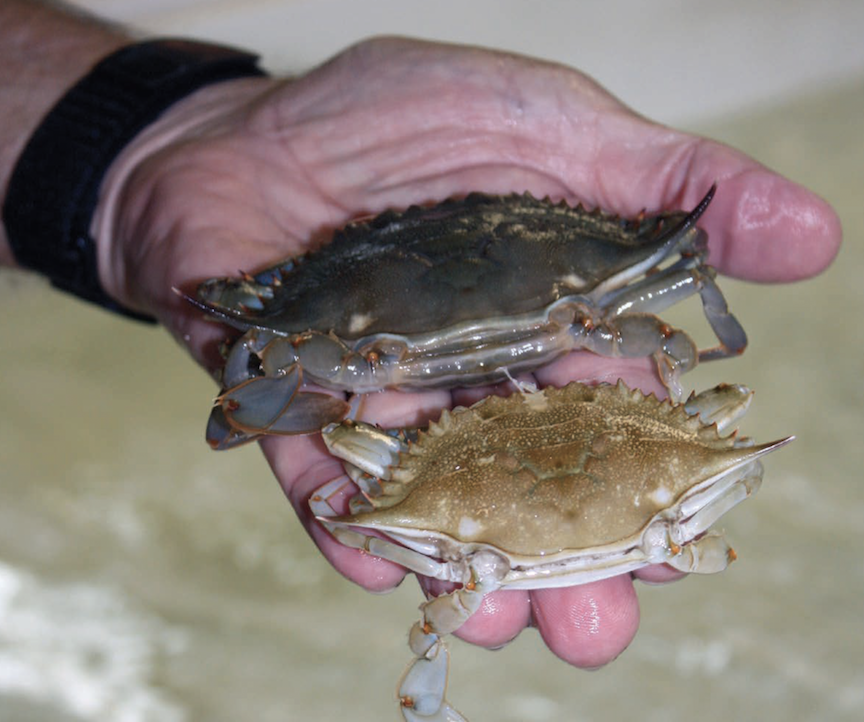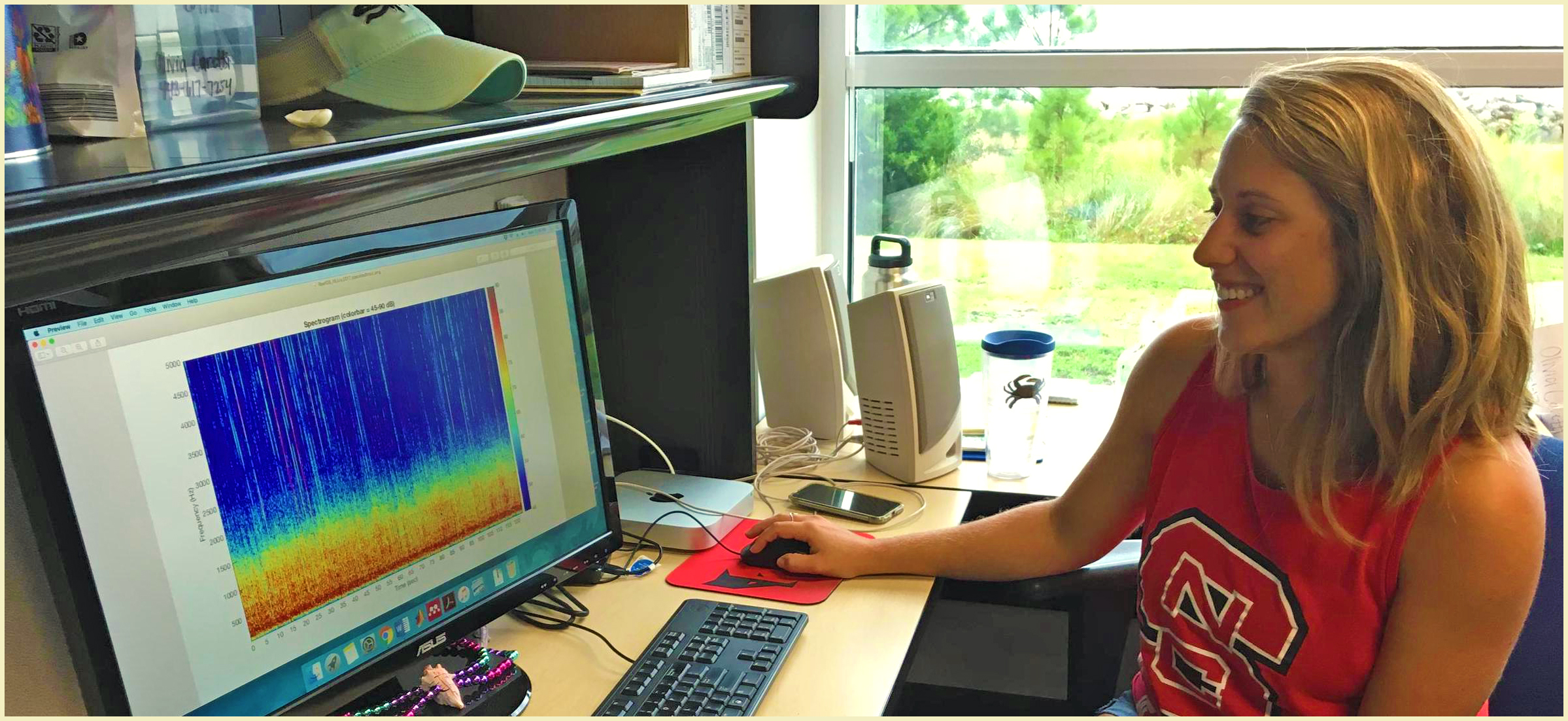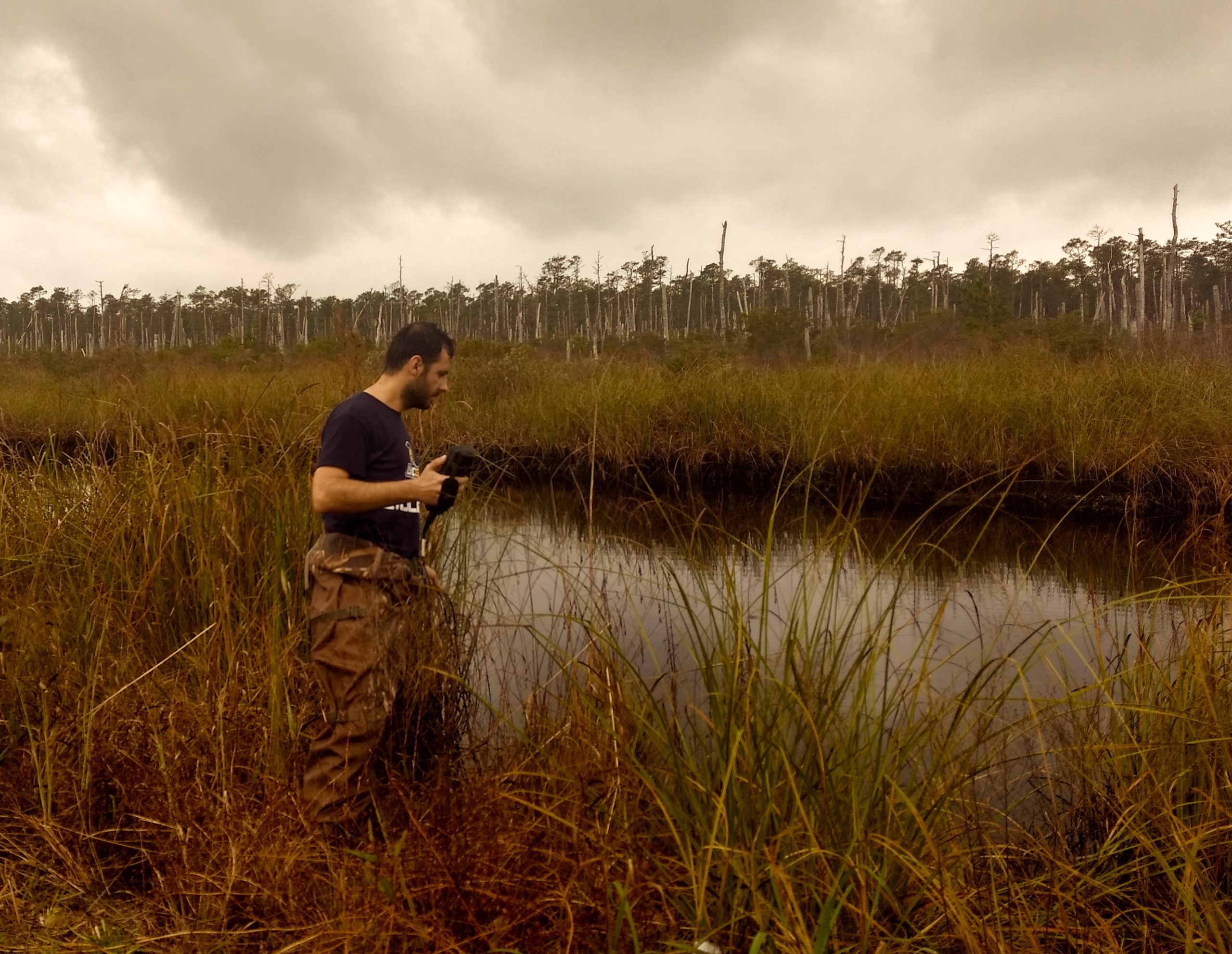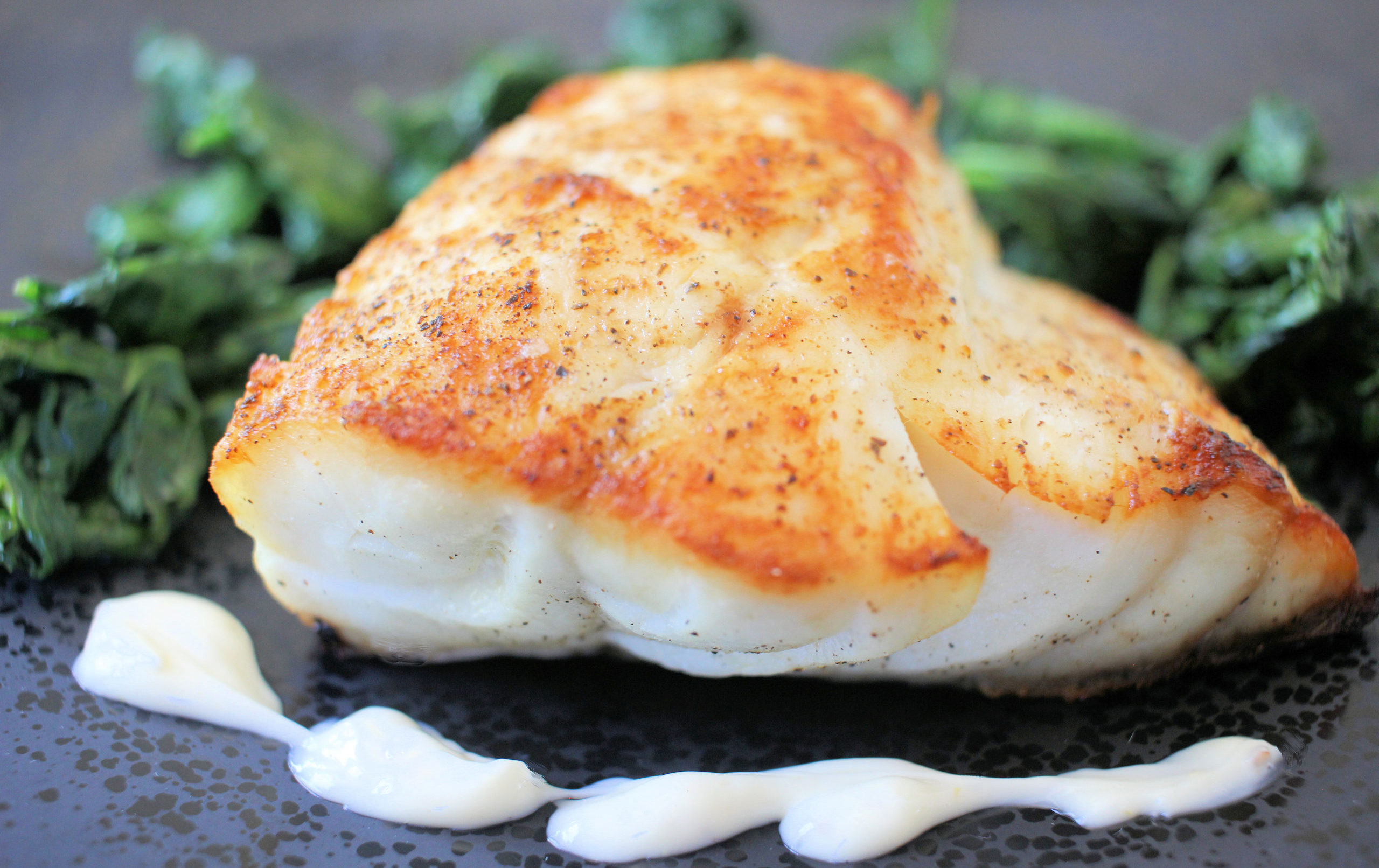Last fall, North Carolina Sea Grant published a collection of free lesson plans on marine aquaculture, or “mariculture.” Designed for high schoolers, the activities cover a wide range of topics, such as aquaculture’s origins and the benefits of shellfish to the ecosystem.
“This curriculum is here to hopefully help teachers — earth and environmental science and marine science teachers, in particular — integrate aquaculture resources into their classroom,” says Amy Sauls, a science teacher at Swansboro High School and lead writer on the lesson plans. “Aquaculture, especially of North Carolina oysters and clams, is a quickly growing industry that our students need to know about.”
Lesson 4, republished here, offers a flavor of what you can expect from these resources. Through a creative slideshow focusing on the blue crab, this lesson encourages students to think about the biology and ecology of various aquaculture species.
“Teach a kid to fish,” quips Sauls. “How about how to grow clams, oysters, or blue crabs?”
Find more lesson plans here.
— Julie Leibach
Lesson Four
Objectives
By the end of this lesson, students will be able to:
- Describe the life stages of an aquaculture species and recognize its habitat needs and other ecological requirements at each stage.
- Compare and contrast the ecological needs of species produced through aquaculture.
- Explain the role of zooplankton and phytoplankton in the food web.
- Explain the ways that different organisms reproduce can help or hinder their suitability as aquaculture species.
Overview
This activity exposes students to North Carolina aquaculture species at multiple scales. First, students will take a big-picture look, exploring a species’ habitat needs and the effects of human activity on its environment. Then they will examine the organism at smaller and smaller scales to better understand the organism’s life cycle and adaptations.
The blue crab (Callinectes sapidus) will serve as a model species, given its important role in marine aquaculture in the state. Indeed, soft-shell blue crabs, along with Eastern oysters (Crassostrea virginica), are the top N.C. marine aquaculture species by volume and by economic value.
Students also will have the opportunity to research other organisms to compare similarities and differences in life stages, habitats, biological needs, and aquaculture potential.
- Grade Level: 9 – 12
- Duration: 2 class periods
Science Standards
Bio.1.2.2
- Analyze how cells grow and reproduce in terms of interphase, mitosis, and cytokinesis.
Bio.2.1.2
- Analyze the survival and reproductive success of organisms in terms of behavioral, structural, and reproductive adaptations.
Bio.2.2.2
- Explain how the use, protection, and conservation of natural resources by humans impact the environment from one generation to the next.
EEn.2.2.1
- Explain ways to mitigate detrimental human impacts on the lithosphere and maximize sustainable use of natural resources.
- Explain the effects of human activity on shorelines, especially in development and artificial stabilization efforts.

Vocabulary
- larva: early, immature form of an animal whose development to maturity involves metamorphosis
- plankton: small and microscopic organisms found drifting or floating in the sea or in fresh water, consisting chiefly of diatoms, protozoans, small crustaceans, and the eggs and larval stages of larger animals
- megalops: a free-swimming larval stage in the development of a crab that follows the zoea stage; a crab at this stage has large eyes, little claws, and legs
- molt: loss of plumage, skin, hair, or an old shell as a regular feature of an animal’s life cycle
- recirculating aquaculture system: tanks used to raise aquatic organisms in which the water in the system is treated and reused through biological and mechanical filtration
- taxonomy: orderly classification of plants and animals according to their presumed natural relationships
- zoea: a crustacean’s first larval form after hatching from its egg; a small, transparent organism that swims at, or near, the surface of the sea
- zooplankton: plankton consisting of small animals and the immature stages of larger animals
Background
Blue crabs are crustaceans, meaning that adult crabs have hard shells and jointed legs. It takes 12 to 18 months for crabs to fully mature. They develop through several stages until they reach the adult shape many of us recognize.
The blue crab starts its life as a microscopic larva called a zoea that drifts through the water eating zooplankton and plant materials. This period lasts 30 to 45 days.
Eventually the blue crab reaches the megalops stage, when it grows a soft exoskeleton and starts to look more crab-like. It sheds that skin after six to 20 days. At that point it is a juvenile crab that looks like a miniature version of an adult crab.
In order for a mature crab to grow, it periodically sheds its hard shell through a process called molting. A soft, pliable crab emerges and expands its soft, new shell. A crab that has just shed its hard shell is known as a soft-shell crab and is a common aquaculture product in North Carolina. Soft-shell crab producers must monitor blue crabs closely in order to harvest them directly after molting. Within only a few hours of shedding its shell, the crab will again return to its hardened state.
Soft-shell crab production is a type of short-term farming, because it consists of removing crabs from the wild and holding them until they molt. Soft-shell crabs can be produced in indoor or outdoor recirculating aquaculture systems, such as the shallow tanks depicted in the illustration. These shedding tanks are simple troughs or shallow tables that hold running water that is pumped from a brackish water supply. Water filtration maintains proper water quality. Molting crabs are separated by mesh enclosures to protect them during this vulnerable life stage.

Blue crabs are part of a complex food web and have evolved numerous adaptations to find food and avoid being eaten. They are omnivores and opportunists in their eating habits. They eat both plants and animals, including bivalves like soft-shell clams; other crustaceans, such as shrimp; fish and marine worms; and anything else they can find, including dead plants and animals. They even eat younger blue crabs!
In turn, many organisms eat blue crabs. Eel, drum, spot, striped bass (rockfish), Atlantic croaker, and catfish all eat crabs when they are in the zoea and megalops stages. Some sharks and cownose rays eat the larger adult crabs, as do Kemp’s ridley sea turtles. Humans also eat blue crabs. In fact, blue crabs are the number-one seafood harvested in North Carolina by volume and monetary value. Fishers deploy crab pots, typically from a boat, to catch crabs.
Blue crabs have a number of other adaptations that make them successful in the marine environment. For example, females produce a large number of eggs — as many as 750,000 to 8 million at a time. This reproductive strategy ensures that at least some eggs will survive, even if others are eaten.
Blue crabs are habitat generalists, meaning that they can exploit different habitats. For instance, they can thrive in high salinity ocean water as well as in inland waters with low salinity. Blue crabs are known as osmoconformers, meaning that they can adapt to the salinity of their environment by adjusting the salt content of their cells through a process called osmosis.
Like many other arthropods — a phylum that also includes insects and spiders — blue crabs can regenerate a lost appendage through molting. They can grow a new full-sized leg or claw after two to three molts.
- Materials: Download the Zoom In PowerPoint presentation at go.ncsu.edu/ZoomIn. The presentation uses photos to illustrate blue crab ecology, biology, and harvesting methods.
Activity
- The teacher will show students, without much explanation, the Zoom In PowerPoint presentation. At each slide, the teacher will ask the students what they see. As the slides progress to show smaller scales, the teacher can discuss food webs, as well as adaptations that the crabs have evolved in order to eat and avoid being eaten.
The teacher will then facilitate a discussion on:
- The N.C. coastline: What lives there?
- Adaptations of the blue crab: How does it survive?
- Blue crab aquaculture: Is the blue crab suitable for production in North Carolina? How so or why not?
- Sourcing seafood: What role do humans play in protecting marine species and ensuring a sustainable seafood supply?
- Students will create a Zoom In PowerPoint or booklet of another N.C. aquaculture species (e.g. Eastern oyster, hard clam, sunray Venus clam, freshwater prawn, rainbow trout, black sea bass), similar to the blue crab PowerPoint.
Students will present their PowerPoint or booklet to another student and explain what they learned about the species, including its taxonomy, biotic and abiotic requirements, life cycle, and suitability for aquaculture. The student pairs should create a list of similarities and differences between one of their chosen species and the blue crab.
Next, the teacher will facilitate a group discussion about the similarity and difference lists. Are any of the similarities or differences related to species taxonomy, for example? Which species are of the same phylum, class, order, or family? The teacher also will ask students to describe which characteristics of their organism could hinder its use in aquaculture, and which characteristics are conducive to aquaculture.
Extension
Each student will explain the findings about their aquaculture species to an adult — for example, another teacher, parent, or adult friend — and have the adult sign off that the student completed the assignment.
References
- Blue Crab Aquaculture in Ponds. 2001. North Carolina Sea Grant. UNC-SG-BP-12-01.
- Blue Crab Unit. Albemarle-Pamlico National Estuary Partnership. (Blue crab fact sheet starts on page 21.)
- Maryland Public Television. 2005. Blue Crabs — The Bay’s Beautiful Swimmers.
- Oesterling, M.J. Soft crabs in closed systems: A Virginia success story. Virginia Institute of Marine Sciences.
Direct links to the references are available with the online version of Lesson 4.



